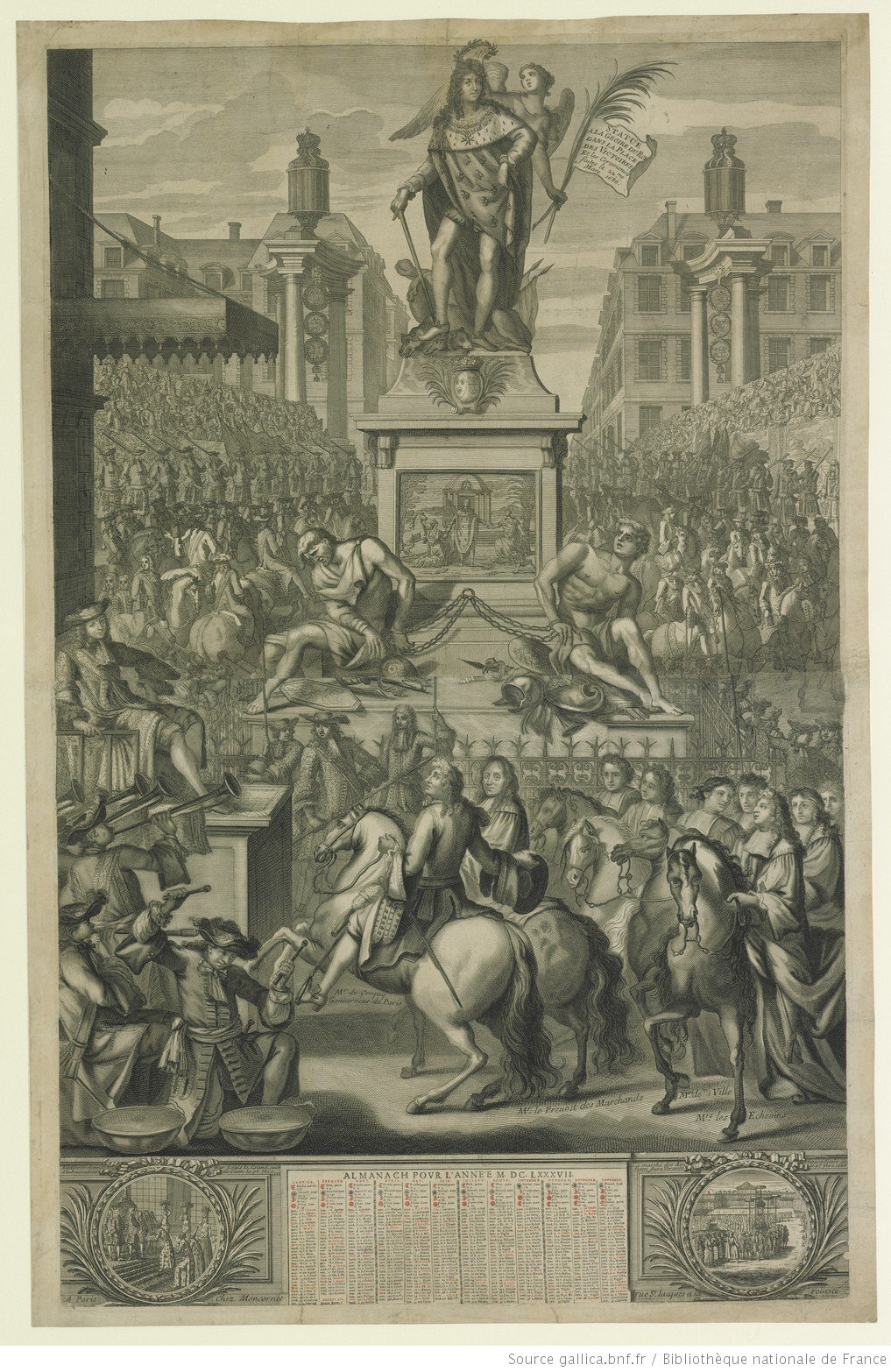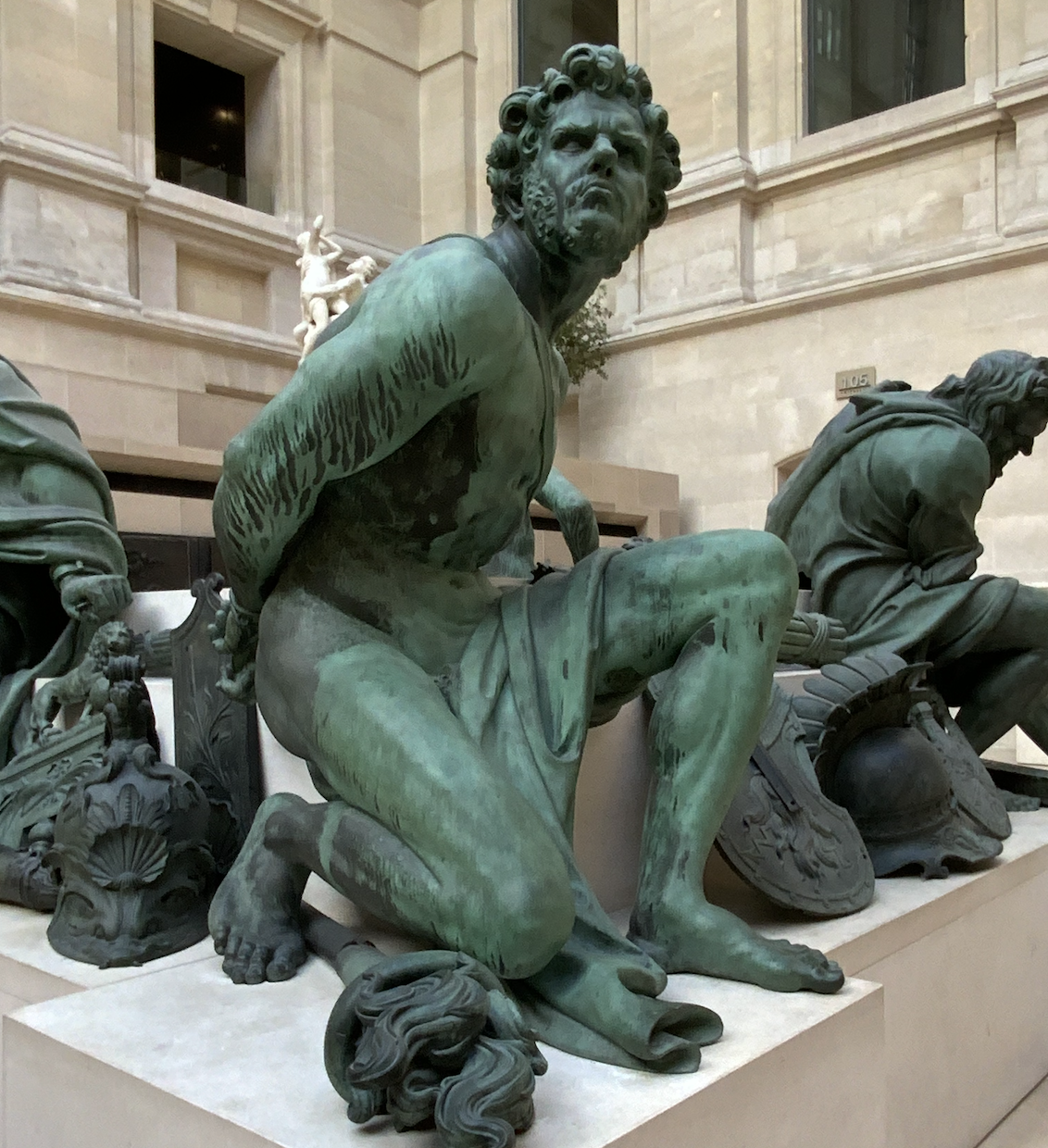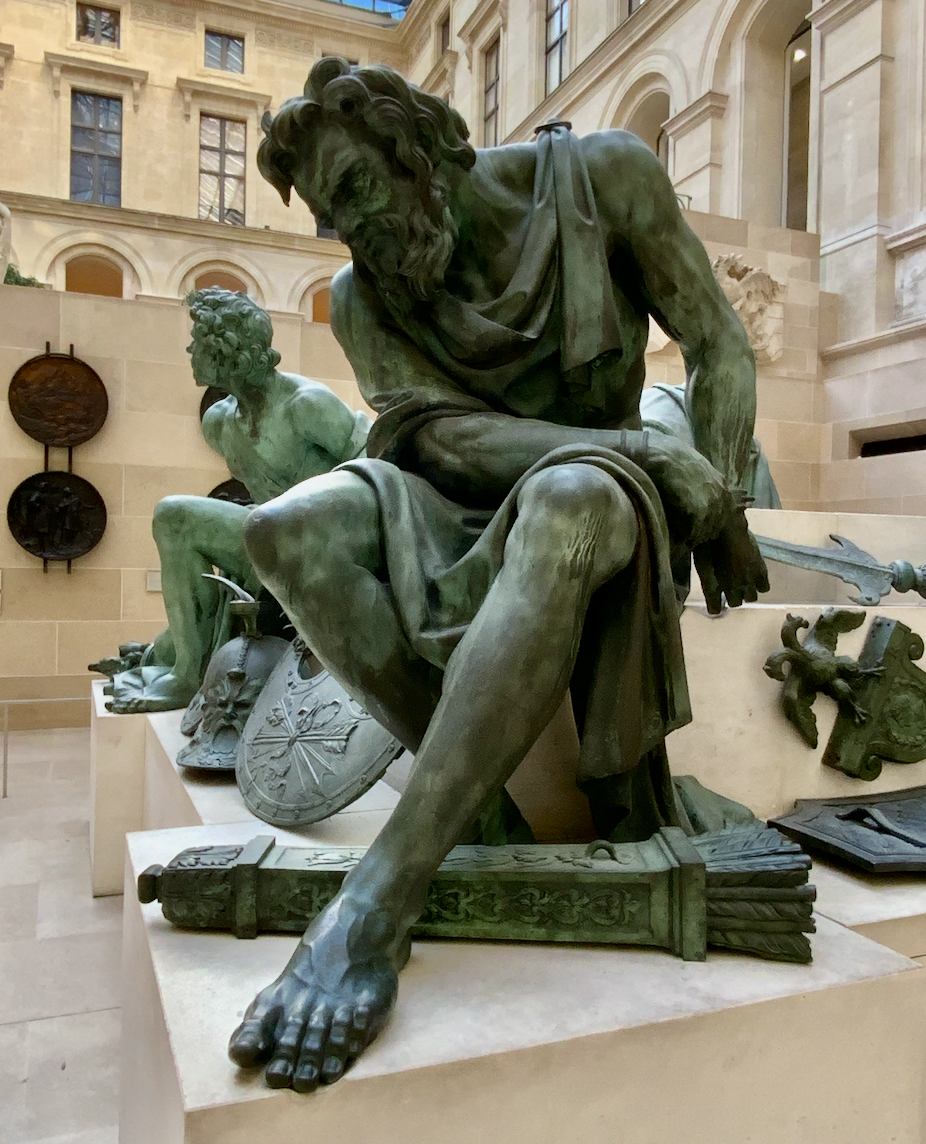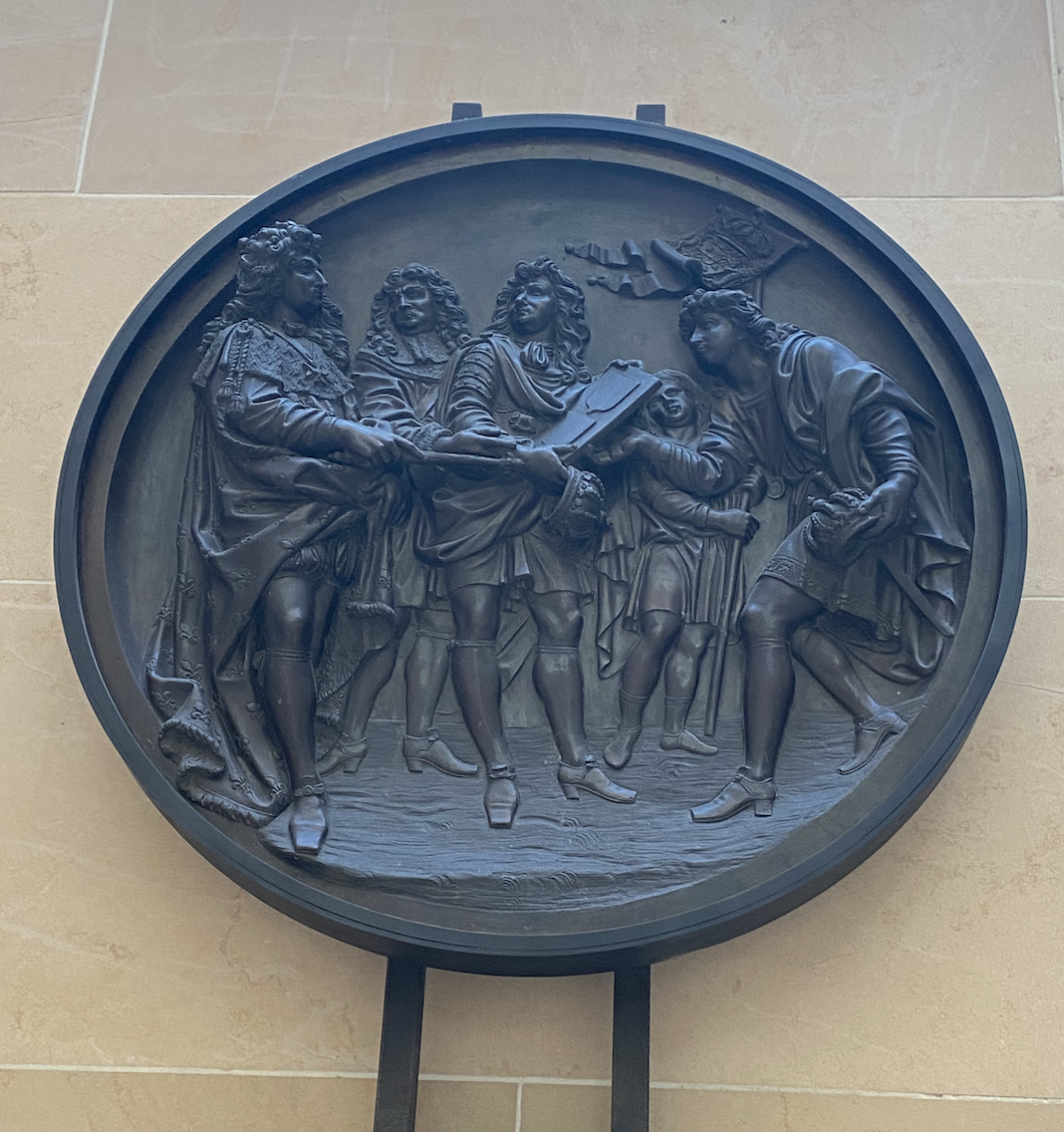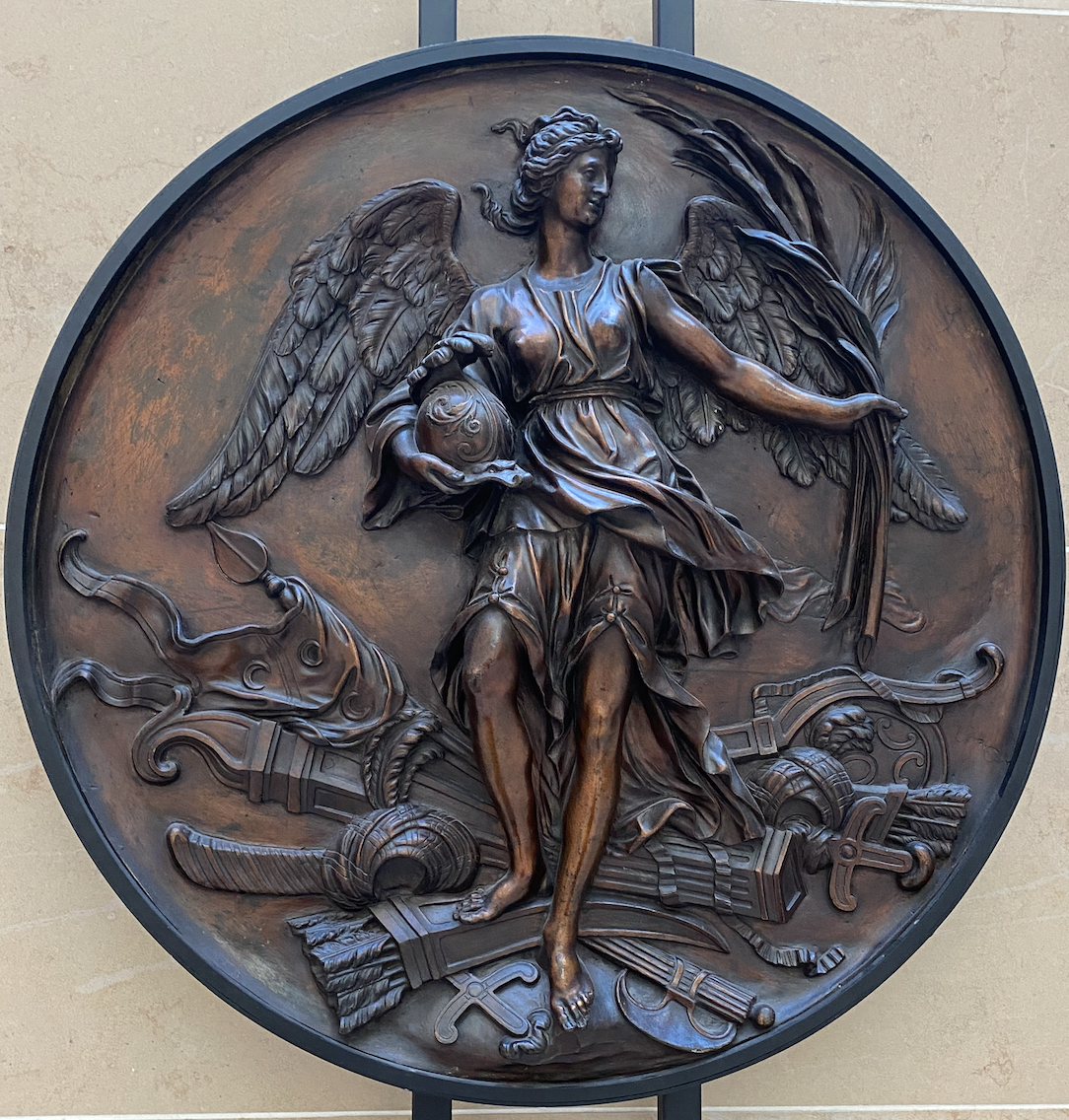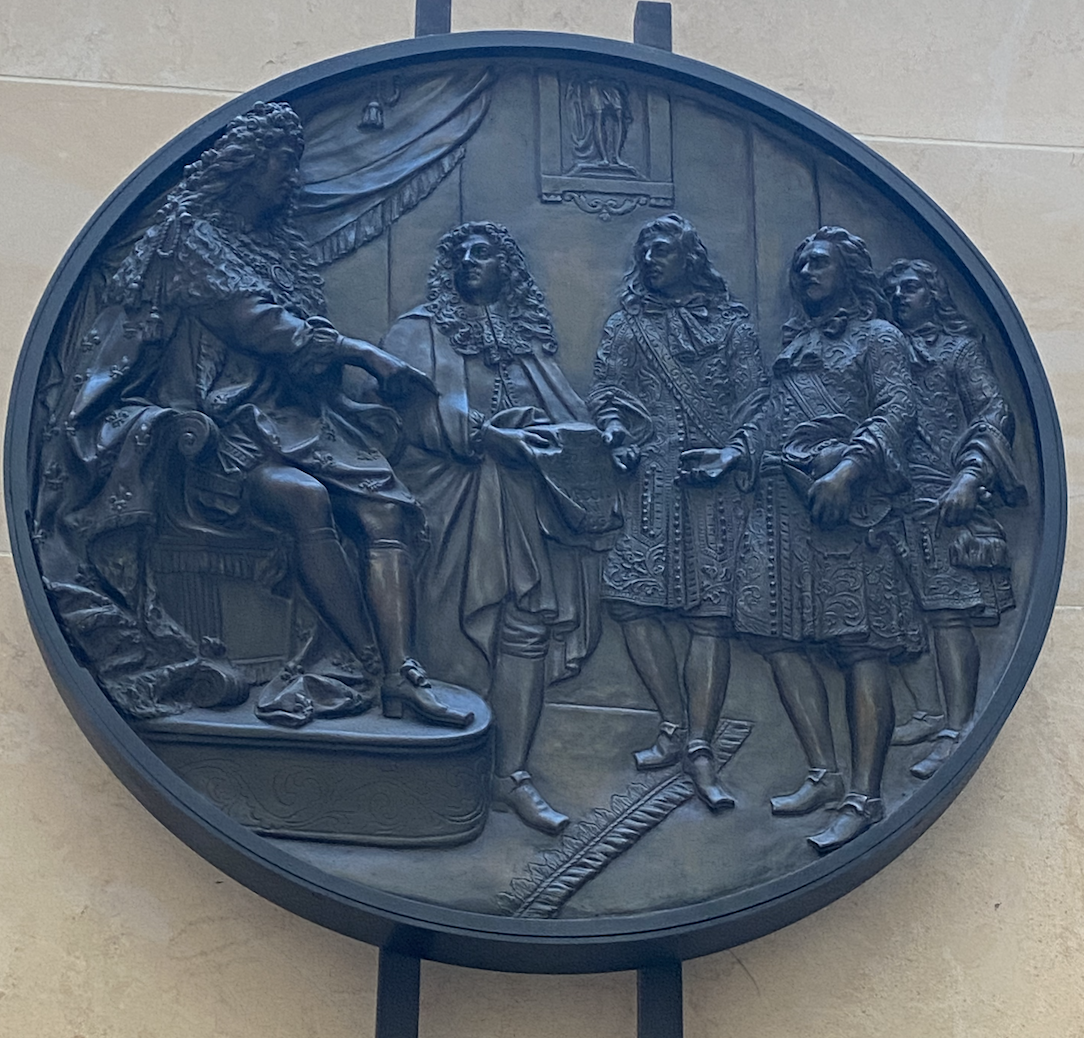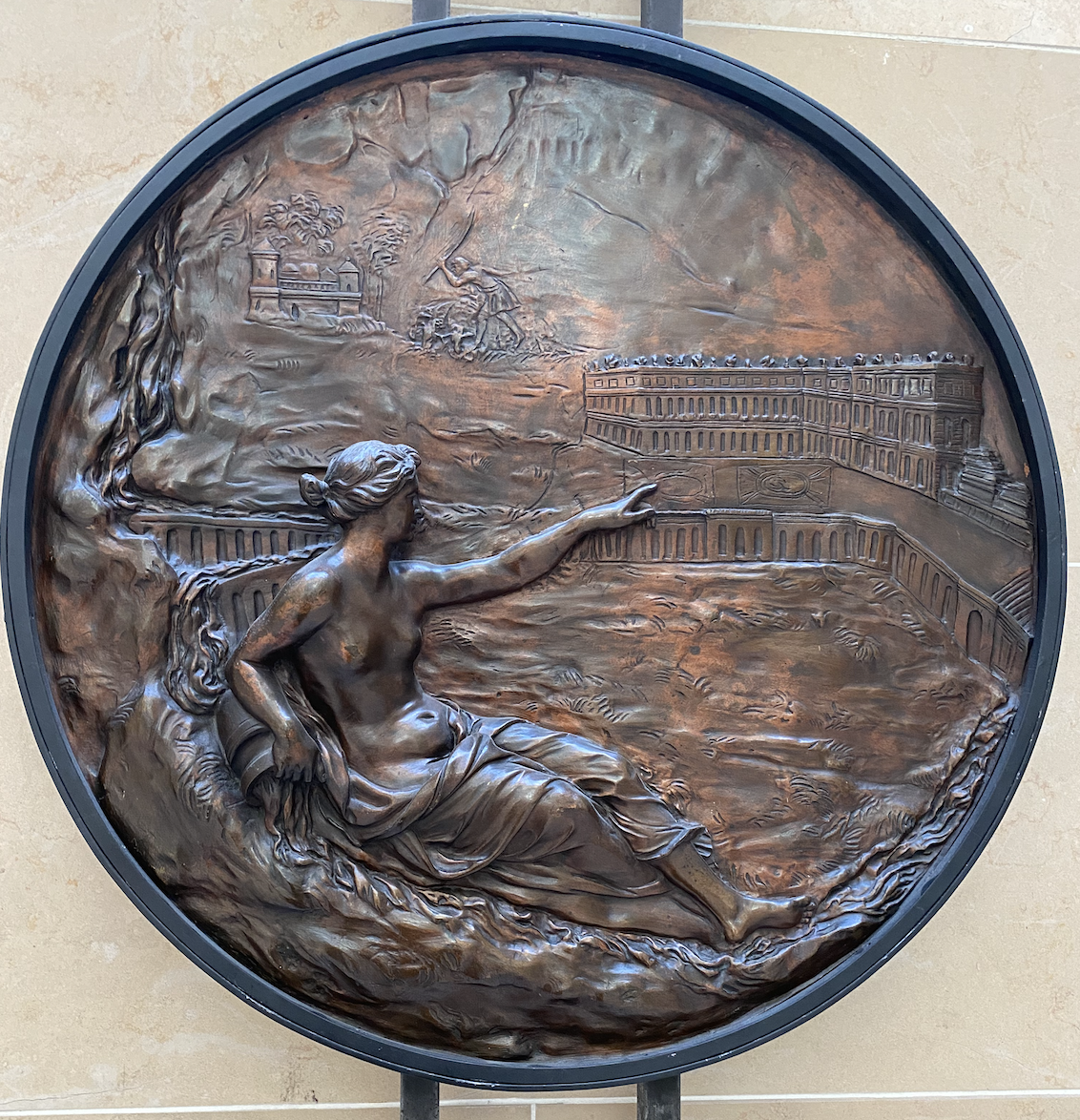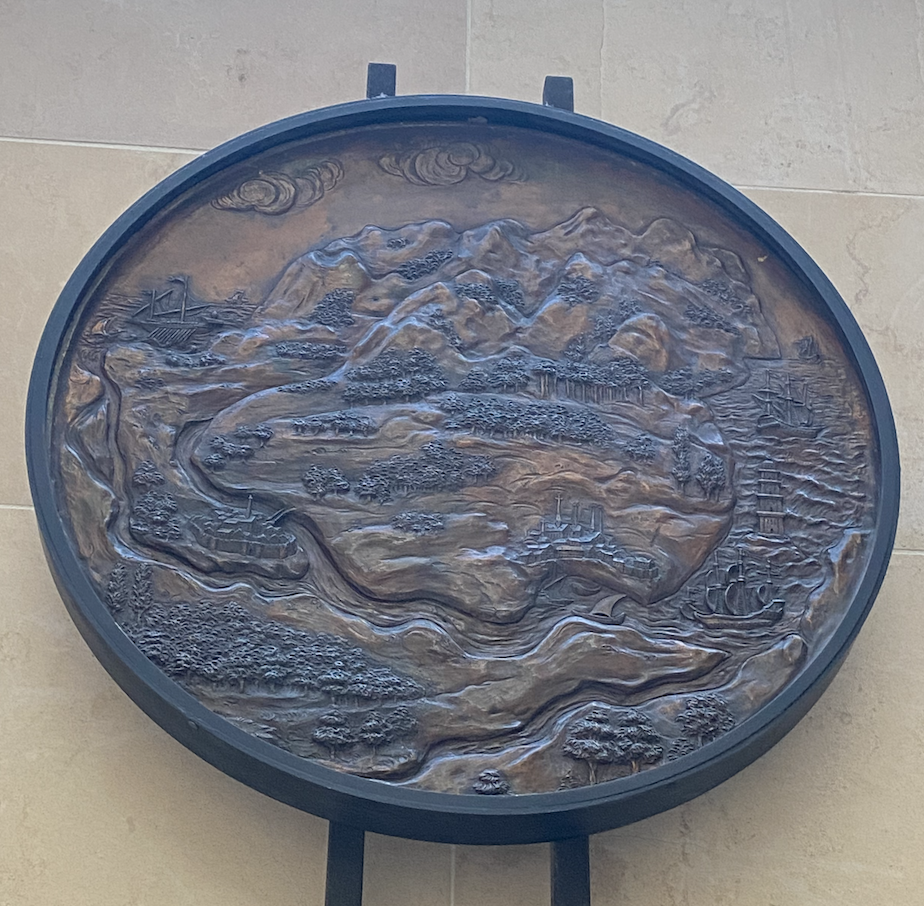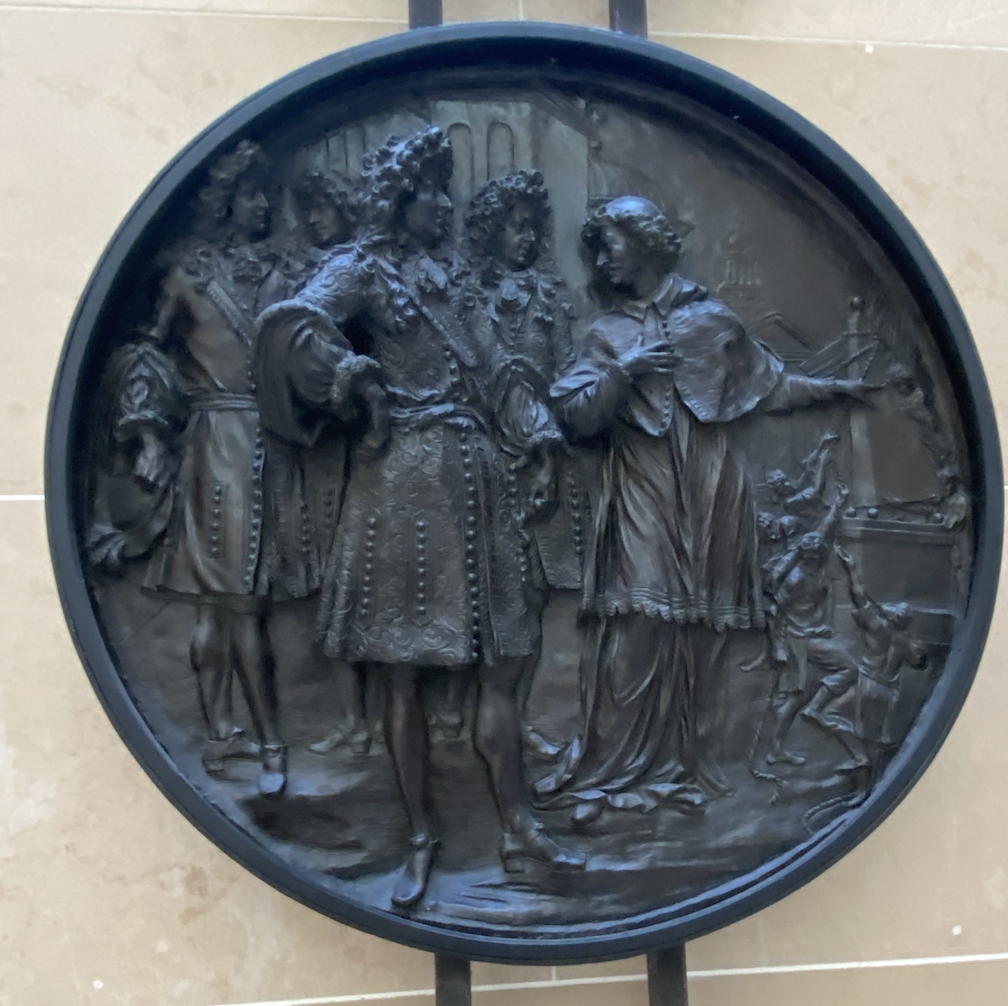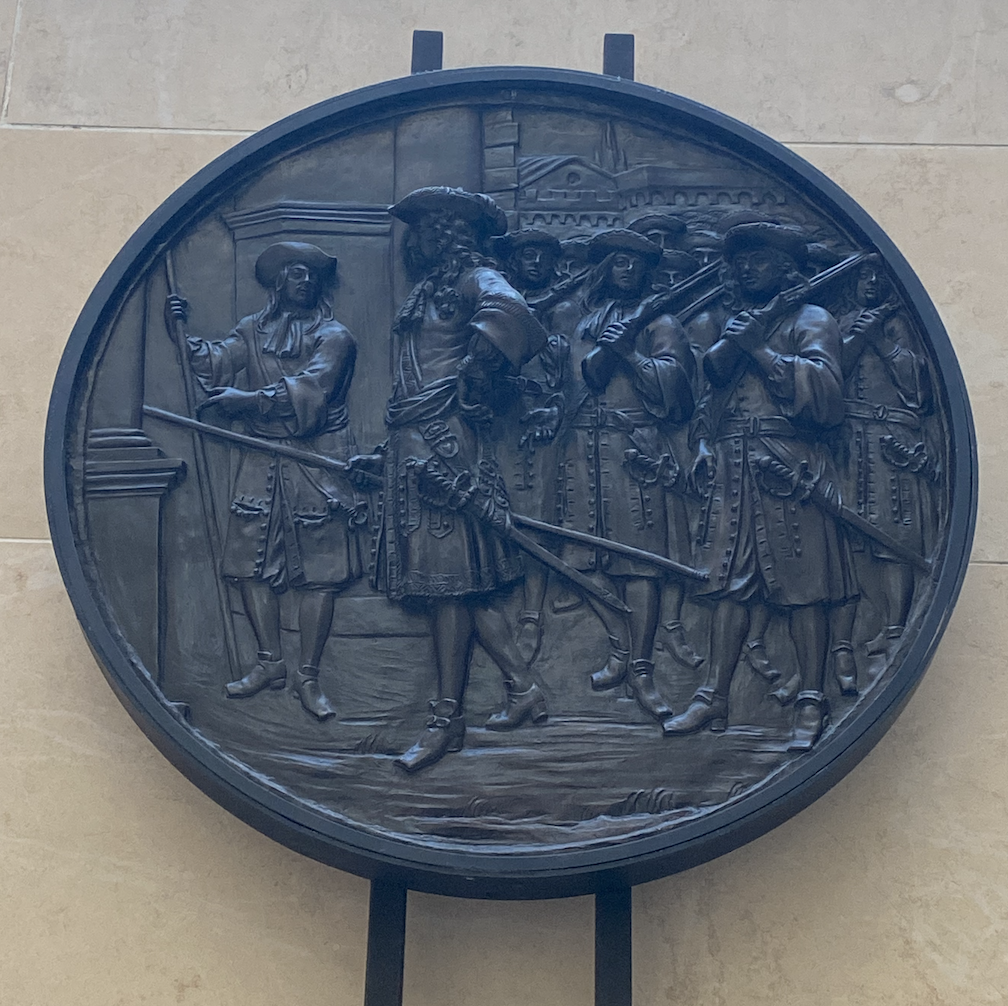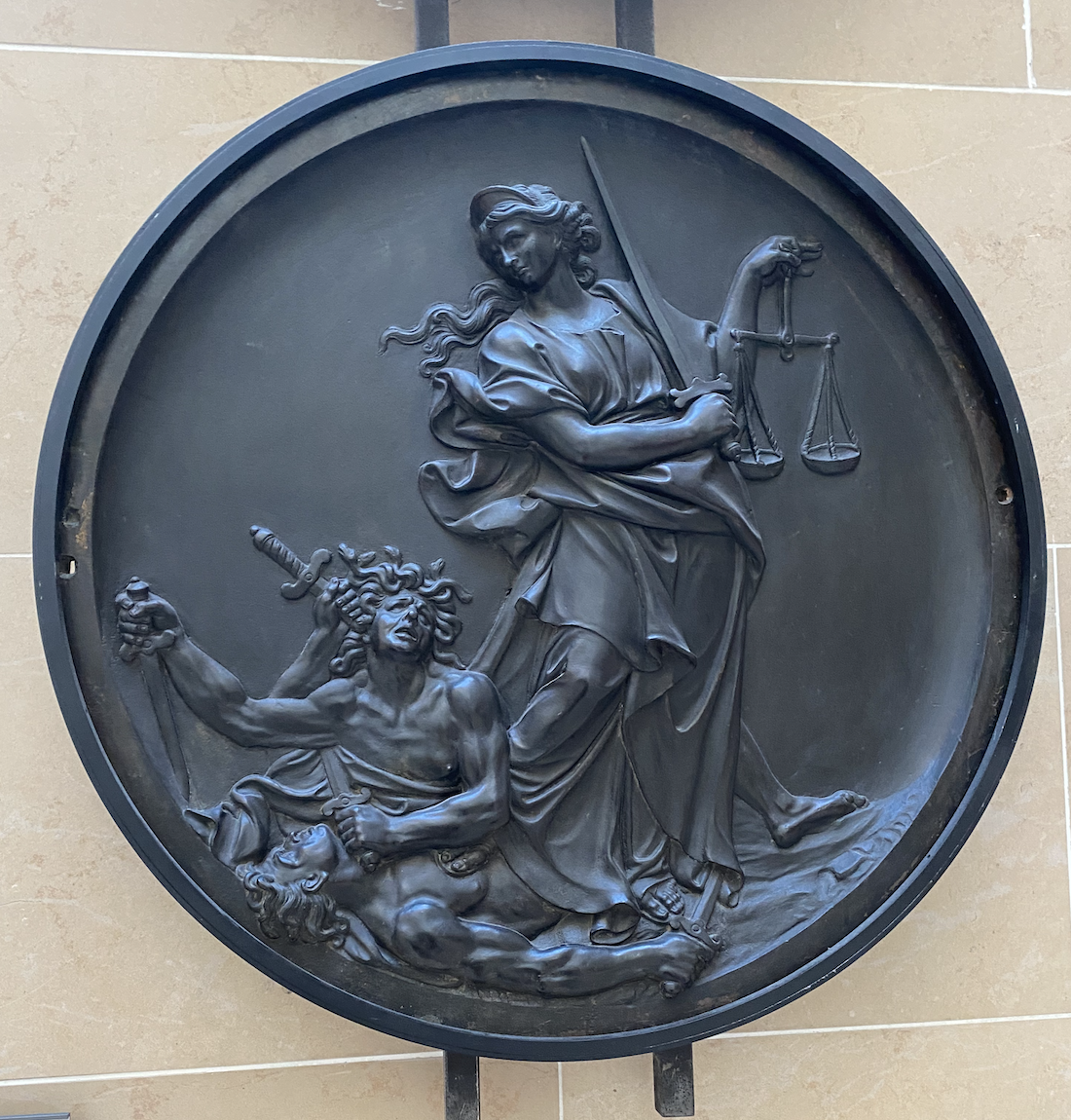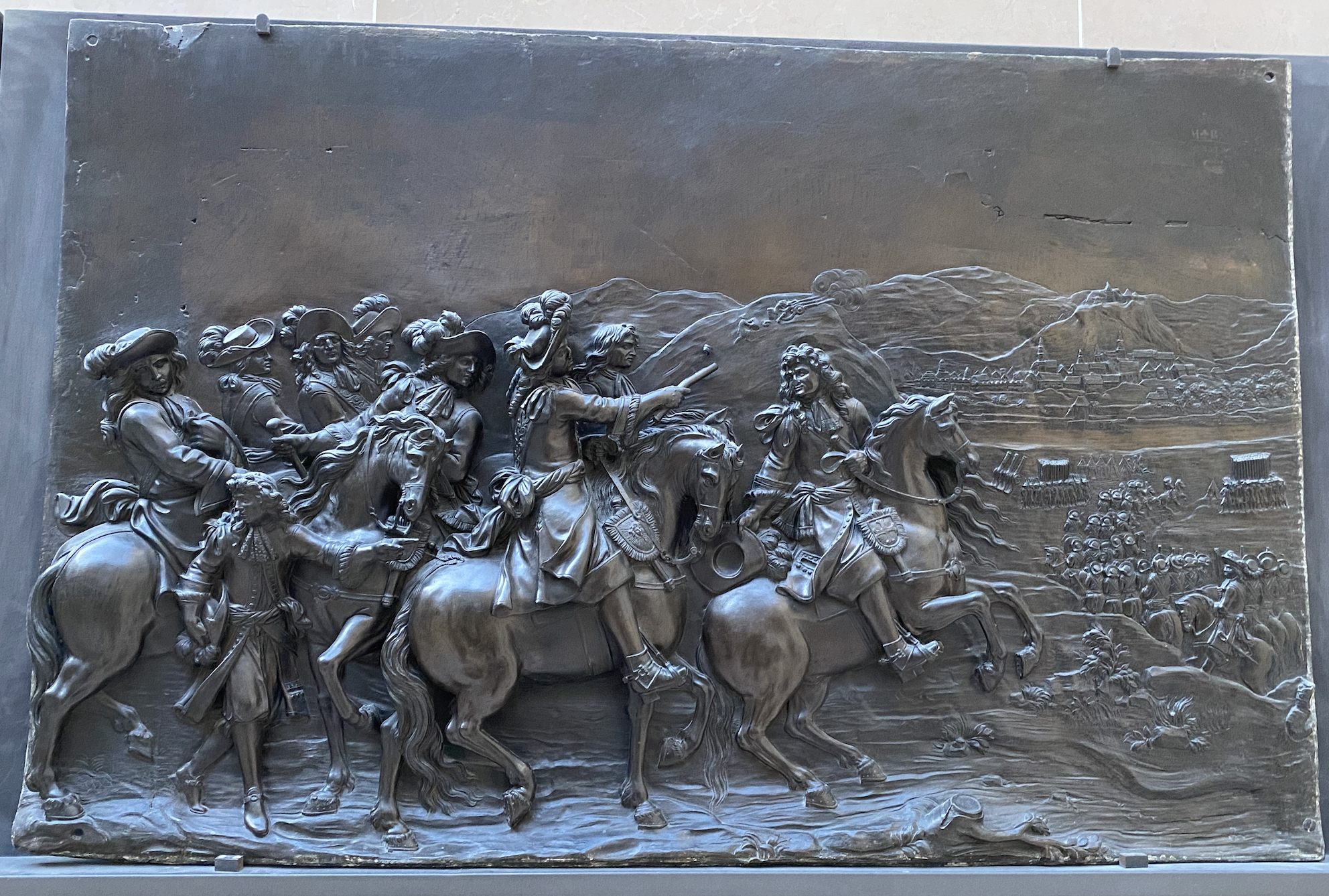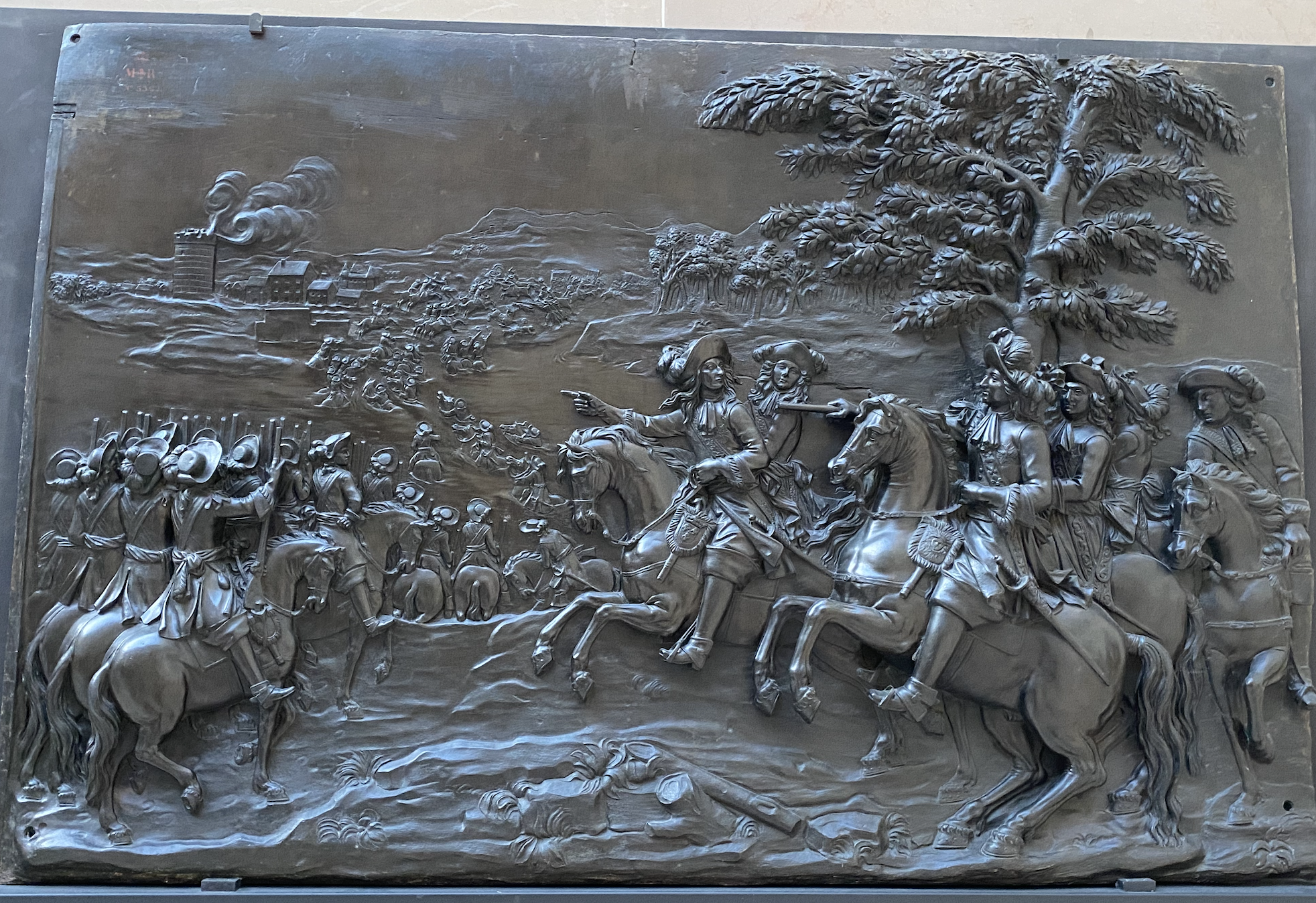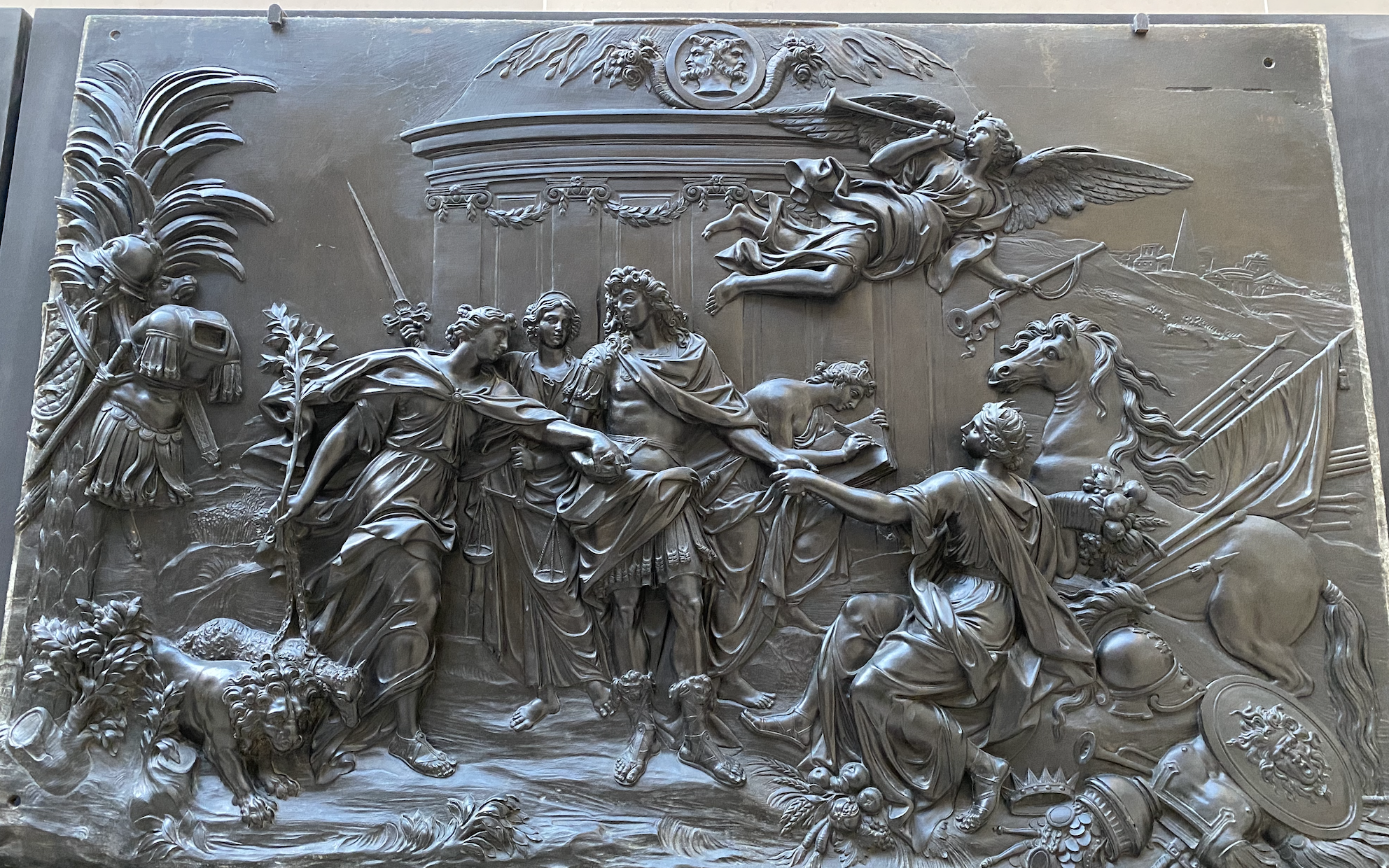This past Sunday on our weekly live walk of Paris we shared the beautiful Place des Victoires and the history of the Louis XIV statue. We ran into a roadblock at the end when I wanted to share the fantastic pieces that were saved from the original 17th-century monument in the Louvre, but you are lucky here they are with even more details.
In 1685 Marshal de la Feuillade decided to create a large square not far from the Palais du Louvre. The gem of an architect Jules-Hardouin Mansart was chosen to create the harmonious group of buildings that would encircle a monument to Louis XIV.
On August 10, 1678, the Treaty of Nijmegen was signed ending the Quadruple Alliance and the end of the Dutch war. France came out on the top by gaining control over Franche-Comté and many of the towns in northern France away from Spain. The original statue was created by Martin Van den Bogaert, known as Desjardins featured Louis XIV standing tall while victory crowns him with a laurel wreath. Below the statue were four bas-relief plaques created between 1681-1685 to commemorate the victories of Louis XIV on the base are the four captives that each represents each of the nations he defeated but each also shows a feeling and a stage of life.
As most stories go, when we reach the Revolution a statue dedicated to a king would not survive. The Revolutionists shot down the statue in 1792 and the ol’ Sun King was melted down to create cannons.
On August 10, 1792, the storming of the Tuileries that led to the absolving of the monarchy but also resulted in many deaths was then marked where Louis once stood with a pyramid covered with the names of those that died. The pyramid didn’t last long under the hot summer sun and fell apart. Under Napoleon, they decided to add another statue to General Claude Dejoux but the very tall nude statue was a bit shocking in all its, ummmm, glory and was partially covered to shield the eyes of the children. Louis XVIII had the statue of Dejoux melted down to recreate the statue of Henri IV on the Pont Neuf in 1814.
Louis XVIII commissioned Francois-Joseph Bosio to create a statue of his great-great-grandfather Louis XIV that could once again be placed in the center of the Place des Victoires. Inaugurated on August 25, 1822, Louis XIV on his horse getting ready to charge into battle sits in the perfect position to catch the sun rising behind him on an early morning.
The one thing that draws me to this statue is the history of the statue that came first because as with all things in my life, all roads lead to the Louvre. Technically the Rue Croix des Petits Champs just off Louis leads right to the Louvre.
Inside the Richelieu wing in the lovely Cour Puget are 41 pieces of the former monument to the Sun King. While Louis himself didn’t make it past the Revolution they must have thought the captives, trophies, and bas-reliefs with the image of the king were ok to keep around, and for that I am grateful.
As you walk into the Cour Puget it is hard not to be impressed by the immense size and detail of the men who are always the background of many selfies much to my chagrin. As you walk to the right is the captive representing Spain but also a young man filled with hope. Going counterclockwise and behind Spain is Brandbourg who is an adult with the feeling of abetment, next to him is Holland in middle age and angry, and rounding out back to the front is the Empire, resigned to his old age.
From left to right: Spain & Youth, Brandenburg & Adult, Holland & Anger, Empire & Old Age
In between each of the men are shields, signs, oars, quivers, and faisceau each done out of bronze with amazing detail. Get close to check out each and everyone as well as the hands and faces of the captives.
On the eastern wall just behind are the 11 medallions that were once on the four large lampposts around the statue created in jasper marble on red marble bases. Originally there were 24 but only 9 of the 11 are the originals that were intended for the monument. Seven of the medallions after they were removed in 1718 ended up in England in the possession of King George III but returned to the Louvre by George IV.
From left to right: The Submission of the Doge of Genoa by Desjardins. Set at Versailles bowing to Louis XIV he is being presented with the submission of his Republic after the French attack on Genoa. Louis XIV demanded he come to Versailles despite the fact he was forbidden to leave Genoa
The Reestablishment of the Swedish in Germany by Desjardins. The restoration of Pomerania to the Swedish by the Elector of Brandenburg under their Treaty of Saint-Germain-en-Laye in 1679. Louis XIV thought this depiction was humiliating and demanded a new one made.
Victory of Saint Gotthard by Jean Arnould. Winged Victory is holding a palm leave and stands on trophies featuring oriental elements as crescents and turbans evoking the battle of 1665 between the Holy Roman Empire and aided by the king of France, and the turks near the monastery of Saint Gotthard in Hungary.
The Reestablishment of the Swedish in Germany by Jean Arnould The updated version that the king preferred.
Left to Right: The Magnificent Buildings of Versailles by Jean Arnould. The Nymph of the fountains of Versailles points to the chateau of Louis XIV seen from the Orangery. Behind is the Maintenon aqueduct that brought water to the palace fountains
The Junction of the Two Seas by Jean Arnould. Depicting the digging of the Canal des Deux-Mers (Canal du Midi) a technical masterpiece by Pierre-Paul Riquet and carried out from 1666- 1681. The canal links the Mediterranean on the left as the port of Sète to the Atlantic on the right represented with the Cordouan lighthouse
The Pyramid of the Corsican Guard, Erected then Demolished in Rome by Jean Arnould. This medallion evokes the building of the expiatory pyramid in Rome in 1664 after a dispute between the French ambassador and the pope’s Corsican Guard. Louis XIV had the pyramid demolished in 1668
The Capture of a City by Jean Arnould.
Left to right: The Restoration of Military Discipline by Jean Arnould. Louis XIV is depicted on the left attending military exercises. The scene evokes the reorganization of the army carried out by Michel Le Tellier and his son the Marquis de Louvois, secreataries of State for War.
The Abolition of Dueling by Desjardins. Commemorating the king’s bank on dueling shows the figure of Justice holding her sword and scales while two men below her fight to the death
The Destruction of Heresy by Desjardins. Praying figures look up at the allegory of Religion holding a container of holy objects, while a heretic in the background removes his mask. Commissioned a few months before the revocation of the Edict of Nantes that put an end to religious freedom for Protestants
To the right on the south wall are the four bas-relief plaques that were on the base of the statue above the captives and from left to right represent, Spain Recognizing the Precedence of France, Conquest of Franche-Comté, Peach of Nijmegen and Crossing the Rhine.
Left: Spain Recognizes the Precedence of France by Desjardins. The diplomatic victory of the young Louis XIV on March 24, 1662 is commemorated in the first plaque. The Spanish ambassador made a public apology to the king for having refused to stand next to the French ambassador at an official ceremony in London in 1661. The scene takes place in the Grand Cabinet in the Louvre in his coronation cloak.
Right: The Conquest of Franche-Comté by Desjardins. The second conquest of Franche-Comté in May & June 1674 a great military success from the start of his reign of Louis XIV, symbolized by the capture of the city of Besançon.
Left: Crossing the Rhine by Desjardins. The triumph from the begining of the Franco-Dutch War during the reign of Louis XIV. when the French army crossed the Rhine on June 12, 1672. Louis XIV and his cousin the Grand Condé are shown on their horses leading the army.
Right: The Peace of Nijmegen by Desjardins. The Treaties of Nijmegen (1678-1679) signed by France with the Dutch Republic, Spain, the Holy Roman Empire and Brandenburg put an end to the Franco-Dutch War. This is my favorite as it brings in allegories of Peace who is seated and represents Europe. The king is surrounded by the allegories of History writing the story, Justice with the scales and Fame blowing the trumpet above.
Together, even without Louis standing in the center it was once an amazing monument that can live on in these 41 pieces and in the etchings of the original dedication.


